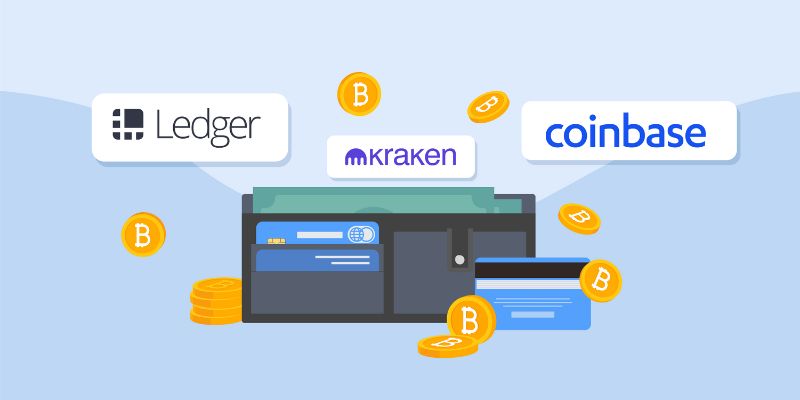Safeguard Your Digital Gold: Best Practices for Storing Cryptocurrency for Beginners
As a cryptocurrency beginner, you might feel like you’re stepping into the wild west. With no physical form, your digital coins might as well be invisible treasure. You know you need a map and a safe to guard your loot. That’s where I come in. I’ll guide you through the essential best practices for storing cryptocurrency for beginners. Just like you wouldn’t leave gold lying around, you shouldn’t be careless with your crypto. Get these basics right, and you’ll lock down your digital wealth like a pro. Dive in as we explore digital safes and cold locks. Your crypto journey to secure storage starts now.
Understanding Cryptocurrency Storage Fundamentals
Digital Wallet Security Basics
When you own crypto, think of it like precious gold. You wouldn’t leave gold lying around. It’s the same with cryptocurrencies. Your first tool is a digital wallet. It’s where you keep your crypto keys. These keys let you use your crypto. It’s crucial to make sure no one else gets them. Here’s how to keep your wallet safe:
- Use strong passwords.
- Always enable two-factor authentication. It’s like a second lock on your money.
- Keep your software up to date. This closes holes that hackers could crawl through.
- Be smart online. Don’t click strange links or give out your key. Just like you wouldn’t give someone your gold.
Cold Storage vs. Hot Wallets
Now, let’s talk about where to keep your wallet. If you’re not trading often, use cold storage. This is like a safe. You put your crypto there and it’s not touching the internet. Hackers can’t get in. Good cold storage is using a hardware wallet or a paper wallet for crypto. A hardware wallet is a small device. You plug it into your computer, transfer your crypto, and put it away. A paper wallet is a piece of paper with your key on it. Keep it safe like cash.
Hot wallets are different. These are apps on your phone or computer. They are always online, or “hot.” They’re good if you trade a lot. But they are at higher risk. Why? Because being online, they are easier for thieves to try to crack into. Like a pocket with money, you’ve got to watch it all the time.
So, remember these steps:
- For storage that’s not online, go with cold storage solutions. Think hardware wallets and paper wallets.
- If you trade a lot, hot wallets are okay. Just be extra careful with them.
By understanding the basics and the difference between hot and cold storage, you’re setting yourself up for success. You’re now on the right path to safeguarding your digital assets. Keep learning and stay safe.
Implementing Safe Storage Solutions
Choosing Secure Crypto Wallets
Picking a safe place for your coins is key. Think of secure crypto wallets as a bank for your digital gold. You want a wallet that no one can break into, but you can always open. There are two main types: hot wallets and cold storage solutions. Hot wallets connect to the internet and are handy for daily use. But, like a car left unlocked, they can be risky if you’re not careful. Cold storage is like a safe. It’s offline, so it’s tougher for thieves to get to.
When picking a wallet, ask “Is this one of the secure crypto wallets?” Look for ones that other people trust. You might want trusted crypto wallet brands or a crypto hardware wallet option. Some come as a tiny device or as a paper wallet for crypto. They seem old-school but work well. Make sure whatever you pick, you understand how to use it and keep it safe.
The Importance of Backing Up Digital Wallets
Now, imagine losing your wallet. With cash, it’s gone for good. With crypto, if you backed it up, you could still get your coins back. That’s why backing up digital wallets matters so much. A backup lets you recover your coins in case of problems. And problems do happen, a lot.
To back up, write down your seed phrase. This is a list of words that can bring your wallet back. Keep this as safe as a secret. Then, look into private key protection. Your private key is like the only key to your money’s lock. If others get this, they can take your coins. So never share it. Use tricks like two-factor authentication. This is like needing both a key and a code to get in.
For extra security, some go for multi-signature technology for crypto. It needs more than one key to open your wallet. Think of it like needing two keys to open a door. It’s tougher for anyone to break in.
Remember, your coins are like digital gold. Safeguarding digital assets is a must. Don’t share your secret details. Be careful where and how you store them. And always have a backup. With these steps, you’re on your way to keeping your coins safe and sound.
Mastering Private Key Management
Encryption and Private Key Protection
Think of private keys like secret codes that unlock your funds. If someone gets them, they get your money. So, we keep them safe. Encryption turns your private keys into codes that only you can understand.
Why is encryption important for private keys?
Encryption stops sneaky folks from seeing your keys. It scrambles them so only you can unscramble. To break in, thieves need your secret password or phrase.
To protect your keys, use strong passwords and trusted software. Go for software or hardware wallets that have top-notch encryption. This keeps your private keys secure and away from wrong hands.
Stay cautious when online. Be sure your internet connection is safe. And never, ever share your private keys. Not even with folks claiming to be wallet support. Real support teams won’t ask for your keys.
Seed Phrases and Multi-signature Technology
Now, on to seed phrases. These are secret words given to you when you set up your wallet. You’ll need these words if you ever lose access to your wallet. Write them down and hide them well. If someone finds them, they can take your cash.
How do you use a seed phrase to recover a wallet?
Use it like a key that helps you get your wallet back. If you lose access to your wallet, enter the seed phrase exactly as it was given. This will let you back in.
As for multi-signature technology, it’s like having several keys for one lock. You need more than one key to open it. This means you need approval from multiple devices or people before a transaction goes through.
Why is multi-signature technology important for crypto security?
It’s super important because it adds more protection. It stops one person from running off with your funds. For big amounts of money, this tech is a must. It’s like having a double-check step for every move you make with your crypto.
When setting up multi-signature, choose people or devices you trust. Make sure they’re always reachable in case you need to make a move. This tech takes more work, but it’s worth the peace of mind.
To wrap it up, deal with your private keys and seed phrases with care. Think of them as the keys to a vault full of gold. Also, remember to consider multi-signature for that extra layer of safety.
In the world of crypto, staying up to date is key. Make sure to keep learning and adapting. Our world of digital money is always on the move, and so should our security steps. Now go ahead, secure your digital gold!
Staying Vigilant Against Security Risks
Recognizing and Avoiding Phishing Attacks
Phishing is a big risk with crypto wallets. It’s a trick to steal your info. Hackers fake email or websites to trick you into sharing your keys. Never share your private key. It should stay a secret, always. Check every link to make sure it’s the real deal. Even a small mistake can cost big.
Let’s talk about staying safe. Always check the sender’s email. If it looks off, it’s a red flag. A secure site has a lock icon by the web address. No lock, no trust. Use a crypto wallet that offers strong safety features. Brands like Ledger or Trezor are good choices. They help keep your digital gold locked tight.
Regular Updates and Protective Measures Against Malware
Malware is like a sneaky thief. It tries to infect your computer or phone. It can steal your crypto without you knowing. So, always keep your wallet software up to date. Updates fix security holes that hackers can use. Use antivirus software, too. It’s another wall to stop malware from getting in.
Backups are super important. They are your safety net if something goes wrong. Back up your wallet often, and keep it somewhere safe. An offline backup is best, like on a USB stick. This way, even if online hackers strike, you have a copy safe and sound. Always remember to use a strong password for your backups. And two-factor authentication (2FA) is your friend. It adds an extra step for anyone trying to get into your wallet. It’s like a double lock on your digital treasure.
For phone or computer wallets, whether you’re using Windows, iOS, Android, or another system, make sure you keep the software up to date. Patches often include security upgrades that are crucial for protecting your assets. Think of it like adding more guards to watch over your valuables.
Lastly, let’s not forget physical dangers. A hot coffee spill can ruin a paper wallet. Keep it away from water and fire. A hardware wallet can take a hit, but it’s still best to handle it with care.
In summary, to prevent phishing, verify sources. For malware defense, update and use antivirus tools. Remember, backups are a must-have. Combine all these steps, and you’ll give your crypto the shield it needs.
In this post, we dove into the nuts and bolts of keeping your cryptocurrency safe. We started by breaking down the basics of digital wallet security. You learned the difference between cold storage and hot wallets – each with its perks for keeping your coins safe. Then, we tackled how to pick secure crypto wallets and stressed the life-saving habit of backing up your digital assets. Next, we got into the real techy stuff, like guarding your private keys with encryption and using seed phrases and multi-signature setups for extra layers of protection. Finally, we discussed how to stay sharp and avoid nasty scams like phishing, and the importance of regular updates to shield against malware.
Smart crypto storage is no game – it’s about staying one step ahead and protecting your investments. Remember, treat your digital cash like treasure; guard it well, and it will serve you well. Stay safe out there!
Q&A :
What are the safest ways to store cryptocurrency for a beginner?
Storing cryptocurrency safely is crucial for protecting your investments, especially for beginners. The safest methods include hardware wallets, which store your private keys offline, and paper wallets, which are physical printouts of your public and private keys. Both methods keep your cryptocurrency safe from online threats. It’s important to keep your hardware wallet secure and to create multiple backups of your paper wallet.
How should beginners secure their cryptocurrency storage?
Beginners should prioritize security by using strong, unique passwords for their online wallet accounts and enabling two-factor authentication (2FA) whenever possible. For added security, consider using hardware or paper wallets for long-term storage. Regularly updating software and being aware of phishing scams are also key best practices. Always remember, never share your private key or seed phrases with anyone.
What are the most beginner-friendly cryptocurrency wallets?
For beginners looking for easy-to-use cryptocurrency wallets, software wallets like Exodus, Trust Wallet, and Coinomi are great options. They offer user-friendly interfaces, helpful customer support, and compatibility with various cryptocurrencies. However, while software wallets are more convenient, they are less secure than hardware wallets, so complementing them with a hardware wallet like Ledger or Trezor for significant holdings is recommended.
Is it necessary for beginners to use cold storage for cryptocurrency?
Cold storage, which refers to keeping a reserve of cryptocurrency offline, is not strictly necessary for beginners, but it is highly recommended for substantial amounts or long-term investment. It dramatically reduces the risk of online theft and hacking. Beginners with smaller amounts or those frequently trading might opt for hot wallets due to their convenience, but should still be mindful of the security risks.
Can beginners use multiple cryptocurrency storage methods?
Yes, beginners can and should use multiple cryptocurrency storage methods to diversify risk. A common strategy is to use a hot wallet for daily transactions and a cold wallet (like a hardware wallet or a paper wallet) for long-term holdings. This approach balances convenience and security, ensuring that not all funds are exposed if one storage method is compromised.



